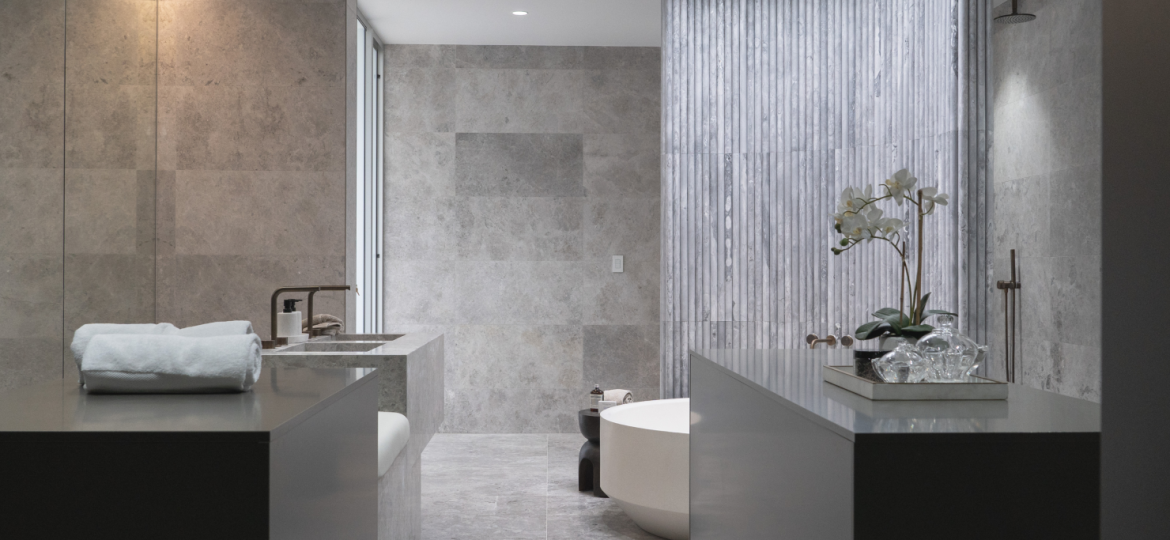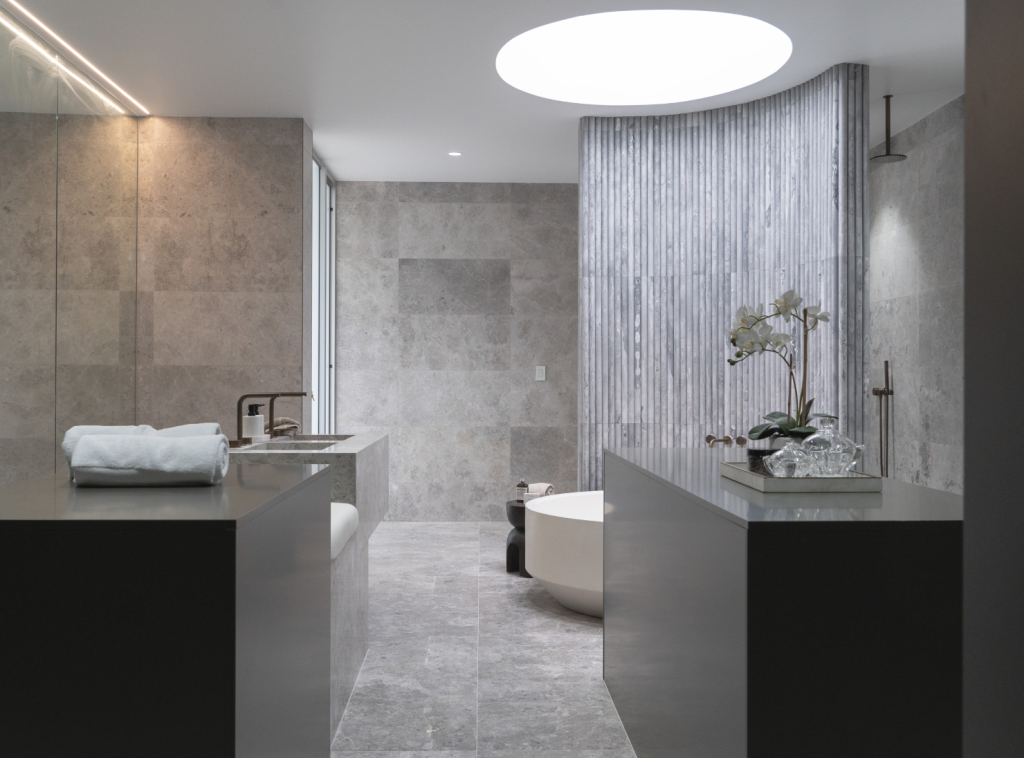
How to Choose the Right Travertine Slab for Your Bathroom Renovation?
Selecting the best travertine slab for your bathroom makeover can redefine the room as a stylish and luxurious spa-like oasis. Coming in such a variety of colors, travertine stone will definitely add the charm and the timeless elegance to your bathroom’s original look. Nevertheless, deciding on the right slab is more than just settling on a shade. Whether you are looking for the specific features of travertine or the overall design of your bathroom, this guide will walk you through the selection process, so that you have a travertine slab that is not only visually appealing, but also suitable for your requirements and preferences.
Table of Contents
Factors to Consider Before Selecting Travertine Slab
Before diving into the vast selection of travertine slabs, it’s important to arm yourself with knowledge about what makes each piece unique and how it fits into your bathroom renovation project. Here are essential factors to consider:
Durability and Finish
Travertine is also highly durable and hence it is considered as the perfect candidate for bathroom installation. Nevertheless, the completed travertine surface characteristics of slip resistance and general feel may be a concern. Honed travertine may become slippery when wet, polished travertine is, on the other hand, shiny but more slippery, while tumbled travertine provides better traction and matte appearance.
Color Variations
Travertine is available in the colors of nature, not man-made; such as warm beiges to deep browns. Each of which is a marble slab with different veining pattern and color, creating a personality of your new bathroom. For instance, think of the color palette of your space and choose the slab that will either match or contrast with the other elements of your design perfectly.
Porosity
Due to its porous nature, travertine stone has voids and holes that can be filled or left empty. The filled travertine gives a slick finish which is convenient for cleaning and more uniform in appearance. The travertine with no infill has a more natural and textured surface that though may require more care and attention.
Size and Thickness
The dimensions and thickness of travertine slabs have an effect on the look and functionality of your bathroom. The size of the slabs defines the look of the end product. Thicker slabs come in handy here to provide the added durability but may require additional support, for instance, in the case of vanities or shower benches.
Source and Quality
A travertine’s origin impacts its color and quality. From one quarry, different travertines can be different in terms of their appearance and quality. Conduct thorough research on the preferred suppliers and also check the travertine slabs in person to ensure that they meet your expectations and quality standard.

Benefits of Travertine Slab for Bathroom Renovation
Incorporating travertine slabs into your bathroom renovation not only elevates the space’s aesthetics but also brings several advantages. Here’s why travertine is a favored choice:
- Timeless Beauty: Travertine’s natural beauty with its warmer tones and patterns makes any bathroom more unparalleled and elegant. With this classic and timeless style, your bathroom stays stylish for many years after.
- Durability: A great feature of travertine that distinguishes it from other types of stone is its ability to withstand the test of time. Its durability to last under the bathroom’s humid and wet condition is the very reason why it is the best material for such places.
- Adds Value: Bringing in the high quality natural stone in your bathroom upgrades, you will be able to add value to your home. This is a top selling point, which is attractive to future home buyers and makes it a good investment.
- Eco-Friendly: Travertine is environmentally-friendly material. As a natural stone, it doesn’t require chemically treated production processes. Hence, it is suitable for eco-friendly homeowners who are aware of the environmental impacts of synthetic materials.
- Versatility in Design: Finishes can range from polished to tumbled, therefore it can be used in any bathroom style, anything from a modern to traditional. The malleability of the materials used in this design process means that there is always room for creativity, leading to an individualized surrounding.

How to Care & Maintain Your Travertine Slabs
The condition of your travertine slabs could be preserved if you took time to care for them and maintain them regularly. Here are key tips to help you preserve the beauty and longevity of your travertine bathroom surfaces:
- Sealing is Crucial: Travertine is a porous material and the same reason it can be stained. Sealing the slabs will prevent water from entering them and save you from stain messes. Travertine must be sealed every year, and this is especially important in high-moisture environments like bathrooms.
- Gentle Cleaning: Do a cloth or mop clean up using a neutral cleaner for natural stone. If you use such acidic or abrasive cleaners, they will dull the surface of the travertine by scratching it. Consistent gentle cleaning prevents dirt depositing and keeps the stone naturally shining.
- Immediate Spill Cleanup: Attend to spills right away to avoid any staining no matter if it is makeup, toothpaste or any other harsh chemicals. Dabbing instead of wiping the spills is better when you want to figure out whether the liquid gets into the stone or not.
- Avoid Scratching the Surface: The travertine tile is hard to scratch, but it could be damaged by abrasive materials. Don’t let heavy objects drag on travertine floors, and if possible, use non-slip mats to avoid scratches.
- Regular Inspection: Time to time, inspect your travertine for any traces of wear or damage, such as chips and cracks. Early detection will give the much needed time to undertake repairs before more damage is done and to preserve the condition of the stone.
It is not compulsory to have headache when taking care of your travertine slabs. Applying these basic care and maintenance tips, you will help your travertine bathroom to remain a nice architectural and durable part of your house for a long time.
Frequently Asked Questions (FAQs)
How can you tell if travertine is good quality?
Distinguishing between superior travertine and inferior one requires you to look into the consistency of the colour and pattern, the density of a material, and the lack of excess pores or holes. While high-quality travertine should have a uniform color set and minimum filler, low-quality travertine usually has wide color variations and filler in layers. The stone can be examined for the tendency to pass lesser light through it by holding it up against the light; the denseness and typically of the high quality is the result of the amount of light passing through it.
Can travertine be used in a bathroom?
Yes, travertine is one of the most popular bathroom options because of natural beauty, durability, and being slip resistant, especially when it is properly finished. Its versatility means that it can be used in pavements, walls, and vanity tops. However, achieving the desired outcome requires sealing the area properly and conducting periodic inspections to prevent against moisture and staining.
What colors go with travertine bathroom?
A broad spectrum is available for the color scheme since the travertine’s natural tones of beige, cream, and grey work well with it. to achieve a welcoming, warm atmosphere choose earthy tones or wood elements that are richly colored. Softer shade of colors like light blue and green can help create a tranquil and SPA-like feel to the space. White furniture and cabinetry can work very well with the natural stone providing a dramatic background that emphasizes its beauty.
How do you clean travertine bathroom floors?
Cleaning travertine bathroom floors involves using a soft mop or cloth and a pH-neutral cleaner formulated for natural stone. Avoid acidic or harsh chemical cleaners, as they can etch the surface. Sweep or vacuum regularly to remove dirt and grit, and mop up spills promptly to prevent staining. Periodic resealing helps protect the floor from moisture and maintain its appearance.

